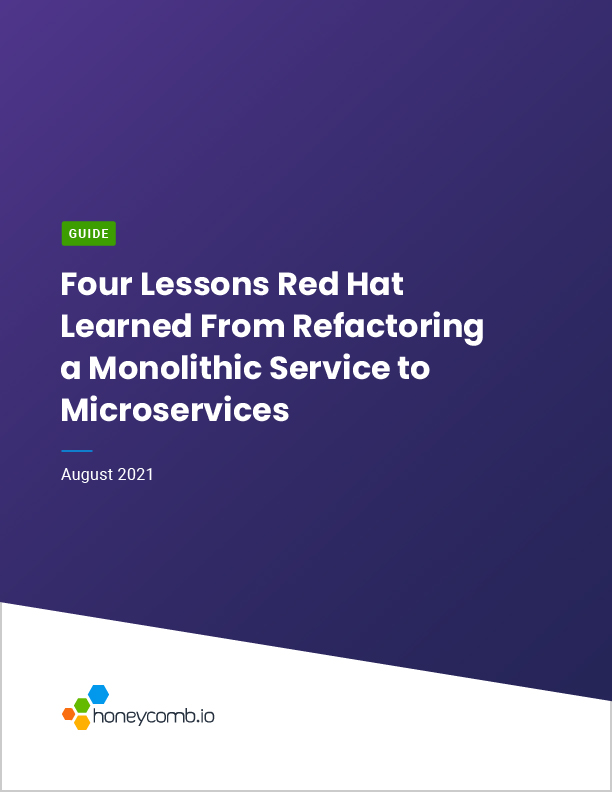Guides Migrations Engineering Best Practices
Four Lessons Red Hat Learned From Refactoring a Monolithic Service to Microservices
During their transition from a monolith to microservices, builds started timing out, and the Red Hat team tried using logs and aggregated metrics to figure out why.
However, they quickly realized they needed to go beyond metrics and logs to gain better visibility into their builds so they could solve for unknown unknowns and successfully debug in production.
Download this guide to read about the four lessons the Red Hat team learned in their transition from a monolith to microservices, including why it’s important to:
- Embrace your role as stakeholder zero—the person who’s bought into making changes before anyone else
- Explicitly document, codify, and monitor the performance of features
- To consider organizational needs and maturity when determining whether to build or buy a solution
- Ask yourself what tools you will need to adapt and solve for unknown unknowns


